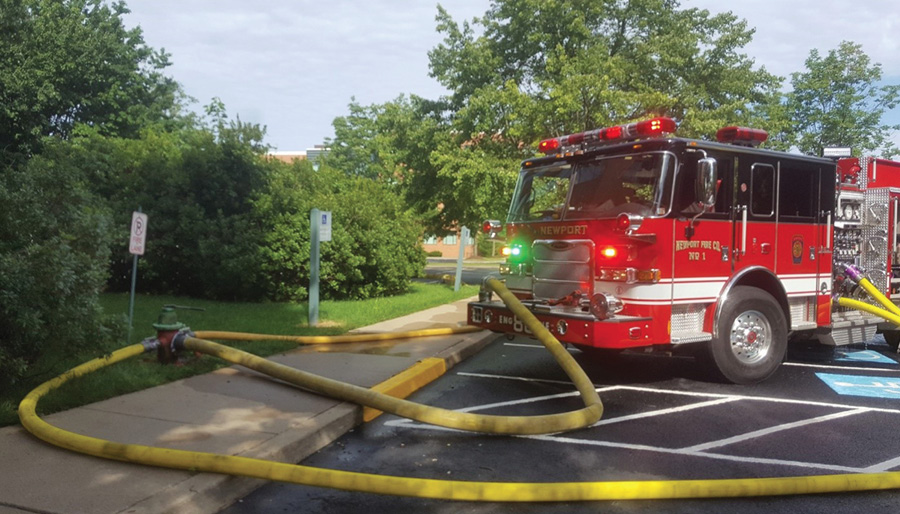
BY DAVID R. HARRIS
Much has been published about transitional attack and the proper sizes, lengths, and flows for attack lines and other related engine company topics. However, you won’t find much on the issue of water supply. They are important topics for an engine company that wants to succeed in suppressing the fire, whether it’s a large metropolitan or a rural volunteer fire department; but if you can’t get an adequate water supply to the attack engine, everything else is futile.
Developing a sustainable water supply is the most important and often overlooked function of the engine company. There isn’t much in the literature on the calculations of fire flows, the water supply needed to sustain the fire flows, the sources of water, preplanning water supplies, and how to overcome water supply issues. Below, the focus is on the basics of water supply options to sustain the fire suppression efforts, especially where the water supply is inadequate or nonexistent.
Preplanning
Effective preplanning ensures that a sufficient water supply is available. The water supply may be through the municipal hydrant system; tanker/tender, relay, or drafting operations; or another special “local plan.” When preplanning, department leaders must consider the following questions:
- What are my target hazards, and what fire flows do these hazards require?
- What flow rates can my municipal system provide, and for how long?
- What are my department’s on-scene water capacity, water supply equipment, training/personnel abilities, apparatus capabilities, and mutual-aid resources?
- Who are our mutual-aid partners, and when will they arrive?
- Do I have, or am I prepared to use, mobile water supply apparatus?
- Have we considered alternative water supplies and methods? What is the minimum lead time for implementing them? Are they outside of our comfort zone or beyond our present capabilities?
- If we have planned for these operations, are all the members involved? What training have we done?
Water supply is based on the gallons per minute (gpm) needed to effectively extinguish the fire, or the required fire flow. Setting up an effective and efficient water supply is one of the most overlooked items on the incident scene and a complacency issue of today’s fire service. Complacency regarding selecting the correct size attack line and inadequate water supplies is responsible for many fire departments across the country getting themselves into trouble.
Developing a sustainable water supply is the most important and often overlooked function of the engine company.
The two fire flow calculation methods used in the fire service are the Iowa Formula and the National Fire Academy (NFA) formula. The NFA formula is quick, and the officer in charge or the incident commander (IC) can use it in preplanning. It is based on the dimensions of the fire building per story and divided as necessary and added to as needed. With the rapid handline deployment, responders may control many fires with the onboard tank water. However, what’s next when the initial 300 to 1,000 gallons of water don’t handle the fire?
The bread-and-butter kitchen fire will most likely be handled with a single line flowing 150 gpm for a minute or two. Now, given a residential structure, which is 40 feet × 20 feet or 800 square feet, divide the 800 by 3, which equals 266, the gpm needed to attack full involvement of the first floor. If there is full involvement of the first and second floors, you will need more than 500 gpm to extinguish the fire.
For a building that is 100 feet × 50 feet or 5,000 square feet, divide 5,000 by 3, so you will need 1,666 gpm of water to effect knockdown for one floor’s total involvement.
What are the flow requirements for an auto body shop or local nonsprinklered hardware store that is 50 percent involved with exposures on both sides? Many departments would consider this “the big one.” Can your available water supply sustain that flow, or will the fire run out of fuel before you develop the gpm to successfully bring it under control? Will that water supply come from the municipal hydrant system, a municipal water supply operation, or a combination of everything we will examine here?
Municipal Water Supply
How well do you know your water supply system? What are the water main sizes, their capacities, their ages, and their locations? Are you operating at a scene where engines are coming in and taking hydrants and thus taking water away from the initial companies? A high-volume hydrant may not be near your fire scene; you may need long hoselays to move water from the source to the attack apparatus. Although you can accomplish a simple 1,000- to 1,500-foot hoselay in short order, what about a 2,000- to 5,000-foot lay? How much hose is available between your department and the incoming apparatus? Relay pumping necessitates coordination, an understanding of friction loss, equipment compatibility, and pump performance.
Another issue is the ability to maximize the water out of a hydrant, which achieves its maximum capacity with water flowing from every outlet. Using the full capability by “dressing out a hydrant” can give you that extra water you may need (photo 1).

(1) Photo courtesy of the Newport Fire Company, Bucks County, PA.
Establish training and interoperability long before the need occurs. Even with careful planning, it takes considerable time to put the pumping relay operation into service. Do you have a plan in place if the municipal water system is compromised? For those in areas with municipal hydrant systems, these devices are critical to the operation, but if you don’t know or understand their capabilities, you might be “showing up at a gunfight carrying a knife.”
Tanker or Tender/MWSA
Known as tankers or tenders, mobile water supply apparatus (MWSA) vehicles are designed to haul water. They come in various sizes and configurations. Often, many can perform fire attack operations. A well-orchestrated MWSA shuttle can yield effective water delivery rates; the keys to this, again, are thorough preplanning and training.
The MWSA generally arrives with a full load of water on the initial dispatch to the fire scene. How you use this water depends on local procedures and the fire flow needed. The initial-arriving fire officer, a chief or company officer, should quickly perform a scene size-up and determine the needed fire flow, including the water supply requirements and how that supply will be obtained. Often, a first-in engine crew makes the hoseline stretch operating on 500 to 1,000 gallons of tank water; shortly thereafter, the MWSA arrives carrying on average 2,500 gallons and begins to nurse water from the MWSA’s tank to the attack engine. This basic setup provides approximately 3,150 gallons (assuming a 10-percent loss), which equates to roughly 20 minutes flowing a single 150-gpm handline or six minutes using a 500-gpm portable monitor. Dropping a portable water tank and off-loading water into it at the end of the driveway does no good if the dump site engine is not on scene and ready for the water or if there is no feasible site to establish a portable water tank system (photos 2).
MWSA and Mutual Aid
On a structure fire dispatch in areas served by MWSA, are mutual-aid companies dispatched on the initial assignment, or does the local chief request assistance on arrival and confirmation of a working fire? The dispatch has most likely been delayed because of the nature of the rural environment; now you have added additional time waiting for the next-due companies to arrive. Are the mutual-aid MWSA prepared or configured to off-load water the way your site is configured? Having tanks set up to allow off-loading only from a side chute or tube probably will not work so well for the vehicle that can off-load only from the rear. The fire scene dump site setup and operation must be coordinated and organized; this is probably one of the most dangerous portions of the water supply operation. You can significantly reduce danger to firefighters by configuring apparatus and folding tanks to avoid requiring apparatus to back up to the dump site.
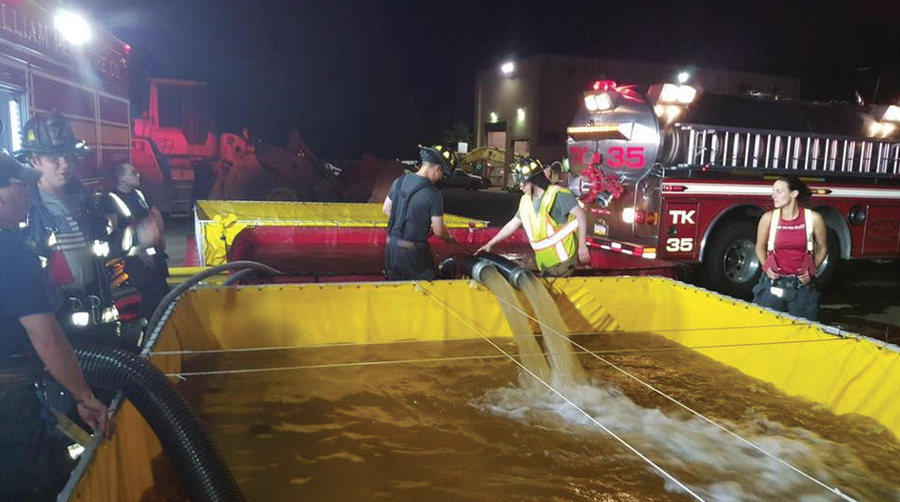
(2) Photo courtesy of the Lingohocken Fire Company, Bucks County, PA.
Fill Site Operations
You must establish a refill point or several points for the empty MWSA as soon as you determine a shuttle operation is needed. It is a good practice to have a fill site engine assigned on the initial dispatch to a predetermined source. Using maps and preselected sources, the engine simply responds to the source location and begins the equipment setup based on the water supply site preplan. Prepare water supply maps and share them with your mutual-aid companies. It is common for a mutual-aid engine to be assigned to fill the MWSA, which may be challenging when mutual-aid companies are unfamiliar with the host department’s water points. Once a fill site is up and running, the fill site officer should inform command or the water supply officer that the site is ready to accept MWSA for filling. The best practice is to have these vehicles equipped to fill the same way with like hose connections. Having the “adapter tree” growing at the fill site slows down the operation and adds confusion for the fill site crew. A standard storz or quick-connect fitting is ideal for this operation. The fill site must operate as smoothly as a race team pit, keeping safety as one of the first priorities. You should accomplish much of this in the preplanning/training phase, as pump operators must understand the concept of supplying MWSA, including the standard operating pressure of 80 pounds per square inch (psi) when refilling these apparatus. The devices shown in photo 3 can simplify your MWSA, relay, or drafting operations.

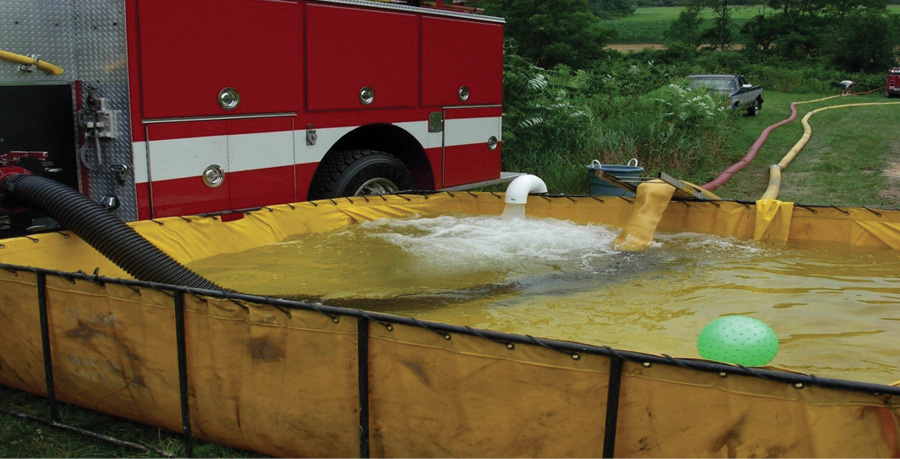
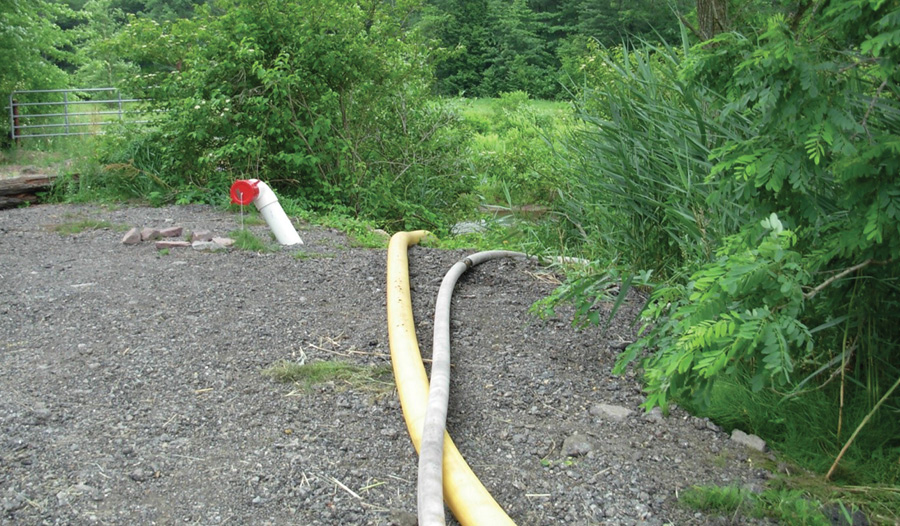
(3-6) Photos by Henry Lovett.
Fill Site Options
One of the easiest fill sites to set up is the high-flow municipal hydrant. A few sections of hose, a couple of valves, and one or two firefighters are all that may be needed. It can take more than 10 hydrant wrench rotations to fully open and close a hydrant. Connect wyes or gate valves to the hydrant’s outlets. This allows the hydrant’s main valve to remain open; flow is controlled by a gate or quarter-turn ball valve. Unfortunately, many closer usable sources are often overlooked because a hydrant is “easier,” even if it adds miles to the shuttle distance.
Dry hydrants. This is another great option for refilling MWSA, but consider the following regarding dry hydrants: Is a maintenance program in place? Have they been flow tested, and are the numbers documented? Because the hydrant itself and access to it were not maintained, the dry hydrant in photo 4 is unusable. Consequently, a water eductor supplies the water.
Suction hose draft. Do your rural- or city-based pumpers carry extra suction hose? The standard 20-foot suction hose complement generally will fall short in many circumstances. What selection of strainers do you carry? Different strainers have different capabilities; do you know yours? Are they low level, floating, barrel type, and so forth?
Portable pumps. These pumps are standard equipment with many rural departments; proper maintenance will ensure dependable operation. Larger pumps (500 to 600 gpm) require multiple firefighters to set up. Using a portable frame tank, the portable pump refills the tank and an engine drafts from the tank to fill the MWSA. The object is to bring the water to the road.
-
Water eductors. For static sources that are inaccessible because of a lack of suction hose or because they are too far from the apparatus’s position, water eductors may allow access to static sources that are 50 to 200 feet away from the pumping apparatus. The water that the eductor delivers may enter the pump inlet through the intake valve or be directed into a frame tank, as with the portable pump operation, as a reserve for the pumper to draft from, again bringing the water to road. These devices need very little maintenance, and one or two firefighters can easily deploy them (photo 6).
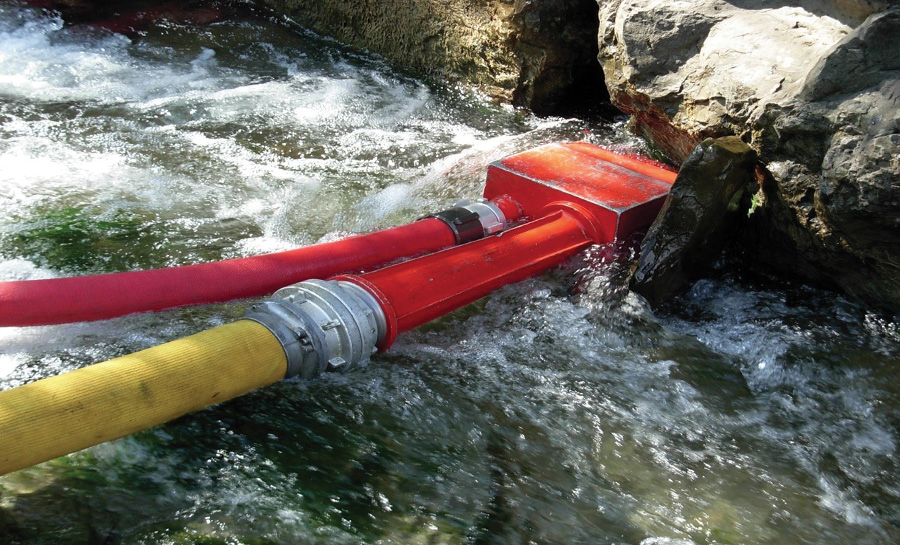
- Hydraulic-driven pumps. Several manufacturers have introduced hydraulically driven fire pumps to the municipal firefighting market. Commonly used in industrial fire suppression, they are now more affordable and sized for smaller operations. An engine-driven hydraulic pump drives a floating hydraulic water pump module more than 100 feet away from itself, providing access to remote water sources.
Putting it all together, we must ask the following: How many of your organizations discuss preplanning for these types of incidents? Is it at size-up or when you arrive? When does size-up begin? The correct answer is, “Size-up starts with preplanning.” Preplanning includes evaluating the available water supply and determining the required fire flow for the various percentages of involvement. But the big question is, Will your water supply, whatever type it is, be able to achieve and sustain your needed fire flow?
If you don’t have efficient hydrants or maybe the “good one” isn’t close to your scene, you will have to rely on other alternatives. Have you and your mutual-aid departments tested your water supply capabilities based on the worst-case incident for your target hazards? Where are your fill/resupply points, do you have access to them, and are your apparatus set up to resupply the MWSA? More importantly, how proficient are your operators in drafting and resupplying these types of apparatus? Assigning officers or personnel knowledgeable in these areas is crucial to a successful water supply operation and is part of the incident command system.
DAVID R. HARRIS, a 38-year veteran of the fire service, is a captain with the Joint Base McGuire-Dix-Lakehurst Fire Department in New Jersey. He is a paramedic in Bucks County, Pennsylvania, where he also served as chief of the William Penn Fire Company and is a volunteer with the Penndel Fire Company. Harris has associate and bachelor degrees and is certified to the Officer 4, Instructor 3, Inspector 3, and HSO levels. He is a Pennsylvania State fire suppression instructor and a Pennsylvania advocate for the National Fallen Firefighters Foundation.

